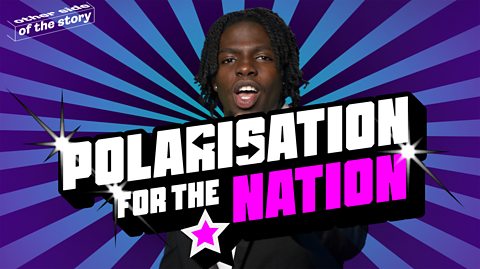In 2017, “fake news” was named word of the year by Collins Dictionary, beating “Insta”, “unicorn” and “fidget spinner” to claim the top spot.
It took social media by storm, and became synonymous with the then US President Donald Trump, who often used the term to criticise the media.
But to suggest that 2017 was the origin of the concept would be, well ‘fake news’. It’s actually been around much, much longer than you think…
Check out our short video and learn more about the history of fake news and how it impacts our lives. Read the tips at the bottom to avoid falling foul of fake news online.
Oi! Fishface! Back in the 1600s, there was a word for someone who believed any old story – a Gudgeon. It meant a kind of fish, one that would bite on anything that was put in front of it, and lets face it, we can all be a bit like that. That’s how misinformation and disinformation, A.K.A. fake news, gets around so much.
We might tend to think that it’s a modern problem created by social media, but no! These problems go way back, take the simplest sort of ‘news’ – like when your mate says to you, “You know her, with the big hair, from year 10? She’s totally cheating on her boyfriend!” You hear something like that, and of course you can try and check the facts, you can ask a lot of questions about where the story comes from, or who knows what or whether it’s true. But most of the time, as soon as you see someone else, you’ll be in there straight away, just like this, “Hey! You’ll never guess what. You know her with the big hair from year 10…” EXACTLY!
And that’s the first reason as to why fake news spreads so easily, human beings just love telling stories. Telling and hearing stories makes us feel good, and it brings us together – and it’s always been like that, right since the time of cave people. You can bet that back then they were right into their gossip!
And what makes a story really effective? What makes us prick our ears up? Or click on a headline? Or watch a TikTok clip? Emotion! And the emotion that makes us react the most is fear! Powerful people have been using fake news for years and years and years, and there’s a good reason for this.
You want to get rid of a powerful rival? You could fight them with an army, but that’s dangerous, it’s expensive. But if you turn the popular opinion against them, just by spreading stories, that’s easy, it’s cheap. That’s what happened to Roman ruler Mark Antony, when rumours about his affair with the Egyptian queen Cleopatra got everyone talking. Mark Antony didn’t last long after that, and the person who spread all the fake news – he became the top dog! The great Emperor Augustus.
And there are some fake news stories that just refuse to die, despite all the evidence. Aristotle proved that the world is round over 2000 years ago, but still the internet is full of conspiracy theories about it being flat. So does that mean nothing’s changed? No! The speed at which false information can spread is new, and there are some algorithms which choose which stories to feed us with, programmed to boost anything that creates a strong emotional reaction.
So here’s a good bit of advice for the social media age, straight from the 1600s – don’t be a Gudgeon!
So, now you know more about fake news of the past, how can you avoid falling for it in the present?
Here are three top tips to help you steer clear of fake news:
1. Always check the source
When considering whether the news you’re reading and watching is real or fake, a good starting point is to always check the source.
It’s best to go to reputable, trustworthy news outlets with fact-checkers to make sure the story is correct.
Learn more about finding reliable sources.
2. Three before it’s good-for-me
If you’re trying to determine whether something you’ve read is fact or fiction, it’s always good to double and triple check.
If a story is being widely reported from lots of different (reliable!) sources, the greater the odds are that it’s real.
Check out this video on how journalists fact-check a story.
3. Impartiality is important
Even if a story isn’t fake, it's important to be aware of how balanced it is. Some news stories don't include all angles, either emphasising or omitting information, and this could sway you towards a particular decision or view, leading to bias.
Being biased can impact your decisions and reactions, because having strong views might make you overlook facts and other people's viewpoints. This could also make you less inclined to question the things you see online, especially if those things align with your personal views, and you could end up sharing and spreading misinformation.
Misinformation is when someone spreads fake news by mistake, unaware that the things they are spreading are false. Learn more about misinformation.

Not sure if the news you’re seeing on social media is true or false? Can you always tell if the things you see online are real or fake? Learn how to get the other side of the story with our quizzes, videos and explainers.


